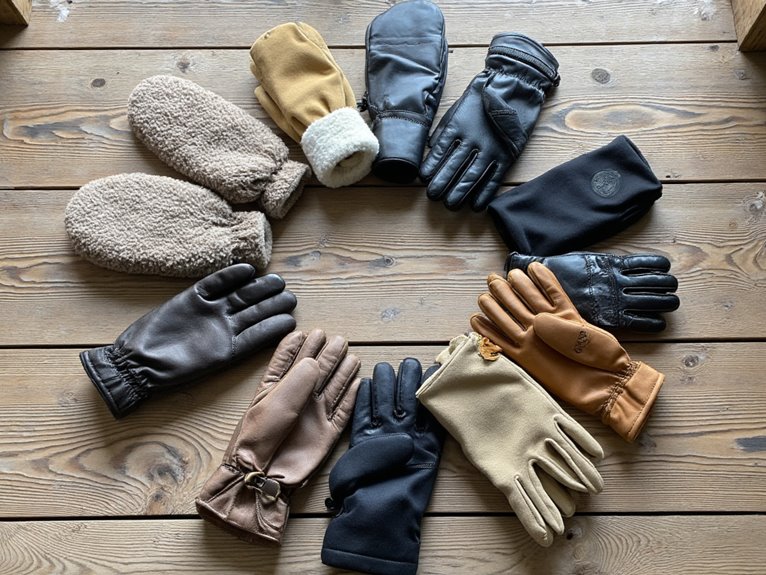Are All Hiking Boots Crampon Compatible?
Not all hiking boots are crampon compatible, as the compatibility of a boot with a crampon depends on various factors, including the boot's material composition, shape, and design. A boot's material properties, such as flexibility and rigidity, have a profound impact on the crampon's ability to grip and stay in place. In addition, a well-designed boot with a sturdy toe and heel area, a rounded toe box, and a lower heel provides a solid anchor point for the crampon. To secure a reliable connection, it's vital to weigh these factors when selecting a boot and crampon combination. There's more to investigate in finding the perfect pairing.
We are supported by our audience. When you purchase through links on our site, we may earn an affiliate commission, at no extra cost for you. Learn more. Last update on 1st January 2026 / Images from Amazon Product Advertising API.
Understanding Crampon Technology
Understanding Crampon Technology
What sets crampons apart from other traction devices is their ingenious ability to convert the downward pressure of a hiker's boot into a lateral grip, effectively distributing the force across the entire device to provide stability on icy or hard-packed snow.
This innovative design enables crampons to dig into the surface, providing a secure foothold even on the most treacherous terrain.
The spikes or points on the crampon are strategically angled to maximize grip, while the frame is designed to flex and adapt to varying snow and ice conditions.
Boot Materials Matter
As hikers rely on crampons to provide stability on icy terrain, they must also consider the material composition of their boots, as it plays a significant role in determining the overall performance of the crampon-boot system.
The type of material used in the boot's construction can affect the crampon's ability to grip and stay in place.
For instance, boots made from lightweight and flexible materials may not provide the necessary rigidity for the crampon to function effectively.
On the other hand, boots constructed from more durable and rigid materials can provide a solid platform for the crampon, ensuring a secure and stable attachment.
Hikers should consider the material properties of their boots when selecting a crampon, as it can make all the difference in their performance on icy terrain.
Crampon Attachment Systems
A reliable crampon attachment system is vital for safe and secure glacier travel.
Most modern crampons use a step-in or clip-in system, where the crampon is attached to the boot via a metal or plastic bracket. This bracket is typically secured to the boot using screws, bolts, or rivets.
Look for boots with a sturdy, reinforced toe and heel area to provide a solid anchor point for the crampon. Additionally, consider boots with a dedicated crampon attachment point, such as a proprietary system or a standard M3 or B3 rating.
These features guarantee a secure and reliable connection between crampon and boot, providing a solid bond that safeguards against accidents.
Boot Shape and Design
Optimizing boot shape and design is essential for ensuring a comfortable and secure fit with crampons, as a boot's contours can profoundly impact the performance and reliability of the attachment system.
A well-designed boot will provide a snug fit, allowing the crampon to securely attach to the boot, while also allowing for a comfortable range of motion.
Key design elements to consider include:
Toe box shape: A more rounded toe box allows for a more secure fit, reducing the risk of the crampon shifting during use.
Heel shape and height: A lower heel and more pronounced heel counter provide a more stable platform for the crampon to attach to.
Ankle flexibility: A boot with a more flexible ankle joint allows for a more natural stride, reducing the likelihood of the crampon coming loose during use.
Insulation and Waterproofing
Effective insulation and waterproofing in hiking boots are essential for maintaining warmth and dryness in cold and wet conditions, thereby guaranteeing a safe and comfortable experience when using crampons.
Insulation materials like Thinsulate, PrimaLoft, or similar synthetic materials help retain warmth, while waterproof membranes such as Gore-Tex, eVent, or similar technology prevent water ingress.
A breathable and waterproof design allows moisture to escape, preventing blisters and discomfort.
The insulation and waterproofing features should be compatible with crampon use, providing that the boot's thermal insulation and waterproofing capabilities are not compromised.
Look for boots with a waterproof rating, such as IPX7 or higher, to guarantee your feet stay dry in wet conditions.
Weight and Durability Factors
In the realm of hiking boots, the weight and durability of the boot are vital factors to take into account.
While it may seem logical to assume that a heavier boot is more durable, this is not always the case.
In fact, advancements in materials and design have led to the development of lightweight boots that are just as resilient as their heavier counterparts in terms of hiking.
Boot Material Matters
A boot's material composition has a profound impact on its overall weight and durability, with different materials exhibiting unique performance characteristics that can make or break a hiker's experience on the trail.
The choice of material can substantially affect a boot's weight, with some materials being inherently heavier than others.
Three key considerations when evaluating boot materials are:
- Leather vs. Synthetic: Leather boots tend to be heavier and more durable, while synthetic boots are often lighter and more breathable.
- Insulation and Lining: Boots with insulation and waterproof linings can add weight, but provide essential warmth and protection in harsh conditions.
- Reinforced Materials: Boots with reinforced materials, such as nylon or Kevlar, can provide added durability without sacrificing weight.
Heavier Is Not Better
A hiker's backpack is often filled with essentials, but the heaviest item is often the one on their feet, as the weight of hiking boots can be a significant contributor to overall fatigue.
While it's natural to assume that heavier boots are more durable, this isn't always the case. In fact, excessive weight can compromise a boot's overall performance and comfort.
A good crampon-compatible hiking boot should strike a balance between durability and weight, ensuring that the boot can withstand harsh conditions without weighing you down.
Look for boots made with lightweight yet durable materials, such as advanced synthetic materials or specialized membranes, which can provide excellent protection without adding unnecessary bulk.
Checking Boot Compatibility
Every pair of crampons is designed to work seamlessly with a specific range of hiking boot styles and sizes, making it essential to verify compatibility before making a purchase.
Failure to do so may result in a poor fit, reduced performance, or even safety hazards.
To guarantee a proper fit, follow these steps:
- Check the manufacturer's recommendations: Verify the crampon manufacturer's suggested boot styles and sizes for ideal compatibility.
- Inspect the boot's crampon receptors: Confirm the hiking boots have the necessary receptors or attachment points for the crampons to securely attach.
- Consult with outdoor gear experts: If unsure, consult with experienced outdoor enthusiasts or gear experts to confirm the chosen crampons are compatible with your hiking boots.



